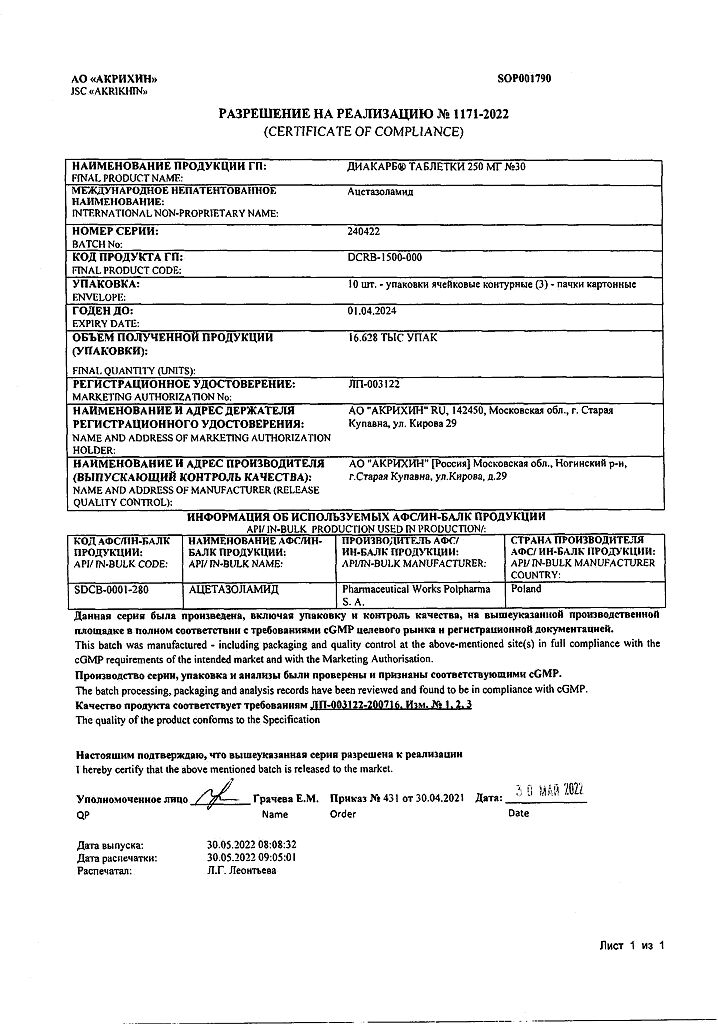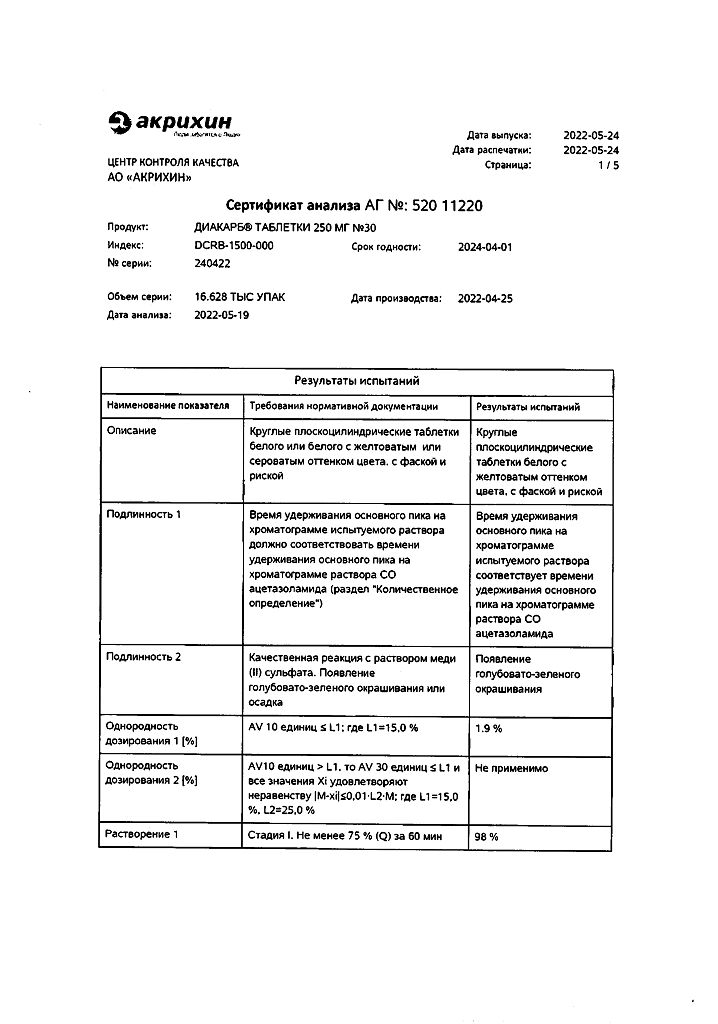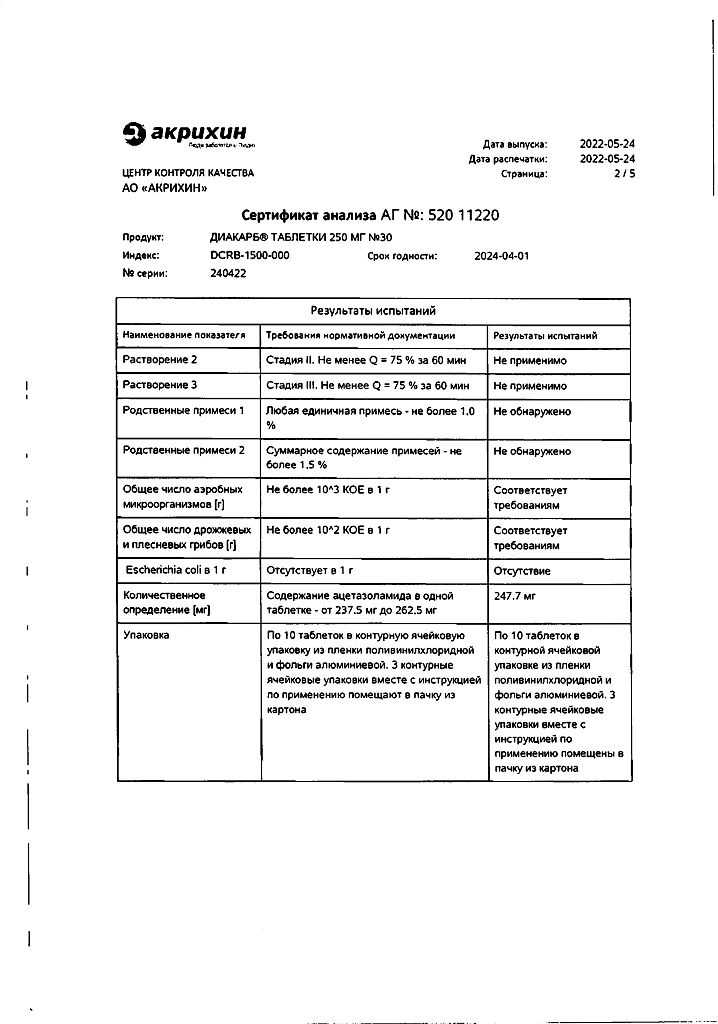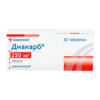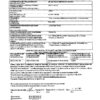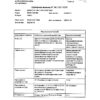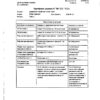No products in the cart.
Diacarb, tablets 250 mg 30 pcs
€7.33 €6.41
Description
Acetazolamide is a systemic carboanhydrase inhibitor with weak diuretic activity. Carboanhydrase (CA) is an enzyme involved in the process of carbon dioxide hydration and carbonic acid dehydration. Inhibition of carboanhydrase reduces the formation of bicarbonate ions with a subsequent decrease in sodium transport inside the cells. The effects of Diacarb® are due to the point of application of the molecule: vascular plexuses of the brain, proximal nephron, ciliary body of the eye, erythrocytes.
Acetazolamide is used to treat liquorodynamic disorders and intracranial hypertension by reducing excessive production of CSF at the level of cerebral vascular plexuses. Inhibition of carboanhydrase in the ependymocytes of the vascular plexus decreases the excessive negative charge in the ependymal cells and reduces gradient plasma filtration into the cavity of the brain ventricles.
Acetazolamide is used in the therapy of edema syndrome due to its weak diuretic effect. As a result of inhibition of carboanhydrase activity in proximal part of nephron, carbonic acid formation decreases and reabsorption of bicarbonate and Na+ by tubule epithelium decreases, which significantly increases water excretion. Acetazolamide increases the excretion of bicarbonates, which may lead to metabolic acidosis. Acetazolamide causes renal excretion of phosphate, magnesium, calcium, which may also lead to metabolic disorders. During the next 3 days of therapy Na+ reabsorption in the distal nephron is compensatorily activated, reducing the diuretic effect of Diacarb®.
After 3 days from the start of use, acetazolamide loses its diuretic properties. After a break in treatment for several days, newly prescribed acetazolamide resumes its diuretic effect due to restoration of normal proximal nephron carboanhydrase activity.
Acetazolamide is used to treat glaucoma. During ocular aqueous humor formation, bicarbonate ions are actively transported to the posterior chamber from the cytoplasm of nonpigmented cells to compensate for the gradient of positive ions due to active transport of Na+ ions. CA inhibitors block carbonic acid formation, thus reducing HCO3– production. In the absence of sufficient amounts of HCO3– ions, the positive ionic gradient is increased, causing a decrease in aqueous humectant secretion. Inhibition of carboanhydrase of the ciliary body reduces the secretion of aqueous humor of the anterior chamber of the eye, which decreases intraocular pressure. Tolerance to this effect does not develop. Ophthalmotonus decreases after 40-60 minutes when taking acetazolamide, the maximum effect is seen after 3-5 hours, the intraocular pressure stays below the initial level for 6-12 hours. On average, intraocular pressure decreases by 40-60% of the initial level.
The drug is used as adjuvant in treatment of epilepsy because inhibition of carboangidrase in the nerve cells of the brain inhibits the pathological excitability.
Indications
Indications
Active ingredient
Active ingredient
Composition
Composition
Associates:
Microcrystalline cellulose – 80.76 mg,
povidone – 8.64 mg,
silicon dioxide colloid – 1.8 mg,
croscarmellose sodium – 7 mg,
magnesium stearate – 1.8 mg.
Interaction
Interaction
Acetazolamide may increase the effect of folic acid antagonists, hypoglycemic agents and oral anticoagulants.
The concomitant use of acetazolamide and acetylsalicylic acid may cause metabolic acidosis and increase the toxic effects on the CNS.
The dose of acetazolamide should be adjusted when co-administered with cardiac glycosides or drugs that increase BP.
Acetazolamide increases the serum levels of phenytoin.
Acetazolamide increases osteomalacia caused by taking antiepileptic drugs.
The simultaneous use of acetazolamide and amphetamine, atropine or quinidine may increase their side effects.
Potentiation of the diuretic effect occurs when co-administered with methylxanthines (aminophylline).
Diuretic effect decreases when combined with ammonium chloride and other acid-forming diuretics.
Enhancement of the hypotensive effect on intraocular pressure is possible with concomitant use with cholinergic drugs and beta-adrenoblockers.
Acetazolamide increases the effect of ephedrine.
Acetazolamide increases plasma concentrations of carbamazepine, nondepolarizing myorelaxants.
Induces excretion of lithium.
Directions for use
Directions for use
The drug is taken orally, strictly on prescription.
If the drug is missed, the dose should not be increased when the next dose is taken.
Oedema syndrome
In the beginning of treatment, take 250 mg in the morning. To achieve maximum diuretic effect, Diacarb® should be taken 1 time/day every other day or 2 days in a row with a one-day break. Increasing the dose does not increase the diuretic effect.
Glaucoma
Diacarb® should be taken as part of complex therapy.
In adults with open angle glaucoma, the drug is prescribed in a dose of 250 mg 1-4 times daily. Doses greater than 1000 mg do not increase the therapeutic effect. In secondary glaucoma, the drug is prescribed in a dose of 250 mg every 4 hours during the day. In some patients, the therapeutic effect appears after a short-term administration of the drug in a dose of 250 mg 2 times per day. In acute attacks of glaucoma, 250 mg 4 times daily.
In children over 3 years of age in glaucoma attacks – 10-15 mg/kg body weight/day in 3-4 doses.
After 5 days of treatment a break of 2 days is made. In case of long-term treatment it is necessary to prescribe potassium preparations and a potassium-saving diet.
In preparation for surgery, 250-500 mg is prescribed the day before and the morning of surgery.
Epilepsy
Doses for adults: 250-500 mg/day in 1 dose for 3 days, with a break on the 4th day.
In concomitant use of acetazolamide with other anticonvulsants, 250 mg once daily is used at the beginning of treatment, gradually increasing the dose if necessary.
Doses for children over 3 years of age: 8-30 mg/kg/day divided into 1-4 doses. The maximum daily dose is 750 mg.
Acute “altitude” sickness
The use of the drug in a dose of 500-1000 mg/day is recommended. In case of rapid ascent – 1000 mg/day.
The drug should be used 24-48 hours before ascent. In case of occurrence of symptoms the treatment is continued for the next 48 h or longer, if necessary.
Liquorodynamic disorders, intracranial hypertension
The use of the drug in a dose of 250 mg/day or 125-250 mg every 8-12 hours is recommended. The maximum therapeutic effect is achieved with a dose of 750 mg/day. Daily, intermittent daily dosing may be necessary to achieve optimal therapeutic effect.
Special Instructions
Special Instructions
In case of hypersensitivity to the drug, life-threatening side effects such as Stevens-Johnson syndrome, Lyell syndrome, fulminant hepatic necrosis, agranulocytosis, aplastic anemia and hemorrhagic diathesis may occur. If these symptoms occur, the drug should be discontinued immediately.
Diacarb® used in doses higher than recommended does not increase diuresis, may increase somnolence and paresthesias, and sometimes also decrease diuresis.
The drug may cause acidosis; therefore, it should be used with caution in patients with pulmonary embolism and pulmonary emphysema.
The drug alkalizes the urine.
Diacarb® should be used with caution in patients with diabetes due to increased risk of hyperglycemia.
If prescribed for more than 5 days, there is a high risk of metabolic acidosis.
The monitoring of blood and platelet counts at the start of treatment and at regular intervals during treatment is recommended, as well as periodic monitoring of serum electrolytes.
Influence on driving and operating ability
Diacarb®, especially in high doses, may cause drowsiness, less frequently fatigue, dizziness, ataxia and disorientation, therefore, during treatment patients should not drive motor transport and operate mechanisms requiring increased concentration and rapid psychomotor reactions.
Synopsis
Synopsis
Features
Features
Intestation
Acetazolamide is well absorbed from the gastrointestinal tract. After oral administration of the drug in a dose of 500 mg, Cmax of the active substance is 12-27 mcg/ml and is reached after 1-3 hours. The minimum plasma concentration of acetazolamide is maintained for 24 hours after drug administration.
Distribution and metabolism
Distributed mainly in erythrocytes, blood plasma and kidneys, to a lesser extent in the liver, muscles, eyeball and CNS. It penetrates through the placental barrier and is excreted in small amounts with breast milk.
It does not accumulate in the tissues and is not metabolized in the body.
Elimination
Extracted by the kidneys unchanged. About 90% of the dose is excreted in the urine within 24 hours.
Contraindications
Contraindications
With caution: edema of hepatic and renal genesis, concomitant use with acetylsalicylic acid (doses greater than 300 mg/day), pulmonary embolism and pulmonary emphysema (risk of acidosis), II and III trimesters of pregnancy.
Side effects
Side effects
The undesired effects are classified according to frequency of occurrence and by organ and system. The following definition of the frequency of adverse effects is accepted: very common (>1/10); common (>1/100, <1/10); infrequent (>1/1000, <1/100); rare (>1/10 000, <1/1000); very rare (<1/10 000), frequency is unknown (cannot be determined based on available data).
Hematopoietic system disorders: rare – aplastic anemia, thrombocytopenia, agranulocytosis, leukopenia, thrombocytopenic purpura, myelosuppression, pancytopenia.
Immune system disorders: frequency unknown – anaphylactic reactions.
Metabolism and nutrition: often – decreased appetite, taste disorders, metabolic acidosis, metabolic acidosis and electrolyte disturbances (can usually be corrected by administration of bicarbonate); infrequently – thirst; rarely – glucosuria; frequency unknown – hypokalemia, hyponatremia.
Mental disorders: infrequent – depression, irritability; frequency unknown – agitation, confusion, disorientation.
Nervous system disorders: frequently – dizziness, paresthesia, in particular tingling sensation in the extremities; infrequently – “hot flashes”, headache; very rarely – drowsiness, peripheral paresis, seizures; frequently unknown – ataxia.
An organ of vision: rarely – transient myopia (this condition disappeared completely with dose reduction or discontinuation of the drug).
Hearing organ: rare – hearing loss and tinnitus.
The digestive system: infrequent – nausea, vomiting, diarrhea, melena; rare – fulminant necrosis of the liver, hepatitis, cholestatic jaundice; frequency unknown – dry mouth, dysgeusia, liver failure, liver colic.
Skin and subcutaneous tissue: rarely photosensitization; frequency unknown – itching, rash, erythema multiforme, Stevens-Johnson syndrome, toxic epidermal necrolysis, urticaria.
Muscular system disorders: frequency unknown – arthralgia.
Uses of the urinary system: frequency unknown – renal concrement formation, crystalluria, renal and ureteric colic and kidney damage, polyuria, hematuria, renal failure.
Gender and mammary gland disorders: infrequent – decreased libido.
General disorders and disorders at the site of administration: often – fatigue; infrequently – fever, weakness.
Overdose
Overdose
Symptoms of overdose are not described. Probable symptoms of overdose may be disorders of water-electrolyte balance, metabolic acidosis, as well as CNS disorders.
Treatment: there is no specific antidote. Symptomatic and supportive therapy is carried out. The content of electrolytes in blood should be controlled, especially potassium, sodium, as well as blood pH. In case of metabolic acidosis sodium bicarbonate is used. Acetazolamide is excreted by hemodialysis.
Additional information
| Weight | 0.021 kg |
|---|---|
| Shelf life | 5 years. Do not use the drug after the expiration date. |
| Conditions of storage | The drug should be kept out of reach of children at a temperature not exceeding 25°C. |
| Manufacturer | Akrihin HFC JSC, Russia |
| Medication form | pills |
| Brand | Akrihin HFC JSC |
Related products
Buy Diacarb, tablets 250 mg 30 pcs with delivery to USA, UK, Europe and over 120 other countries.


